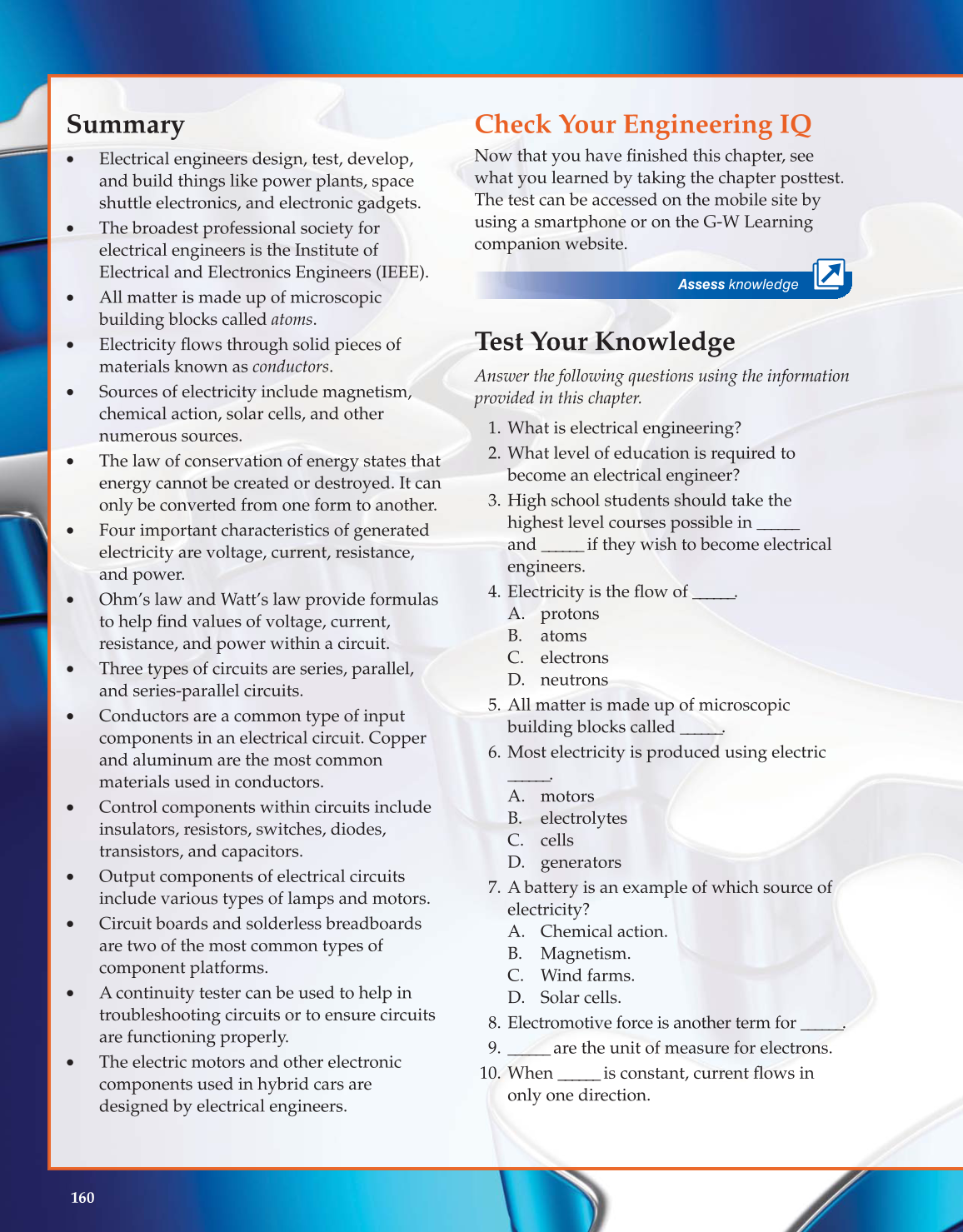160
Summary
• Electrical engineers design, test, develop,
and build things like power plants, space
shuttle electronics, and electronic gadgets.
• The broadest professional society for
electrical engineers is the Institute of
Electrical and Electronics Engineers (IEEE).
• All matter is made up of microscopic
building blocks called atoms.
• Electricity fl ows through solid pieces of
materials known as conductors.
• Sources of electricity include magnetism,
chemical action, solar cells, and other
numerous sources.
• The law of conservation of energy states that
energy cannot be created or destroyed. It can
only be converted from one form to another.
• Four important characteristics of generated
electricity are voltage, current, resistance,
and power.
• Ohm’s law and Watt’s law provide formulas
to help fi nd values of voltage, current,
resistance, and power within a circuit.
• Three types of circuits are series, parallel,
and series-parallel circuits.
• Conductors are a common type of input
components in an electrical circuit. Copper
and aluminum are the most common
materials used in conductors.
• Control components within circuits include
insulators, resistors, switches, diodes,
transistors, and capacitors.
• Output components of electrical circuits
include various types of lamps and motors.
• Circuit boards and solderless breadboards
are two of the most common types of
component platforms.
• A continuity tester can be used to help in
troubleshooting circuits or to ensure circuits
are functioning properly.
• The electric motors and other electronic
components used in hybrid cars are
designed by electrical engineers.
Check Your Engineering IQ
Now that you have fi nished this chapter, see
what you learned by taking the chapter posttest.
The test can be accessed on the mobile site by
using a smartphone or on the G-W Learning
companion website.
Assess knowledge
Test Your Knowledge
Answer the following questions using the information
provided in this chapter.
1. What is electrical engineering?
2. What level of education is required to
become an electrical engineer?
3. High school students should take the
highest level courses possible in ______
and ______ if they wish to become electrical
engineers.
4. Electricity is the fl ow of ______.
A. protons
B. atoms
C. electrons
D. neutrons
5. All matter is made up of microscopic
building blocks called ______.
6. Most electricity is produced using electric
______.
A. motors
B. electrolytes
C. cells
D. generators
7. A battery is an example of which source of
electricity?
A. Chemical action.
B. Magnetism.
C. Wind farms.
D. Solar cells.
8. Electromotive force is another term for ______.
9. ______ are the unit of measure for electrons.
10. When ______ is constant, current fl ows in
only one direction.
